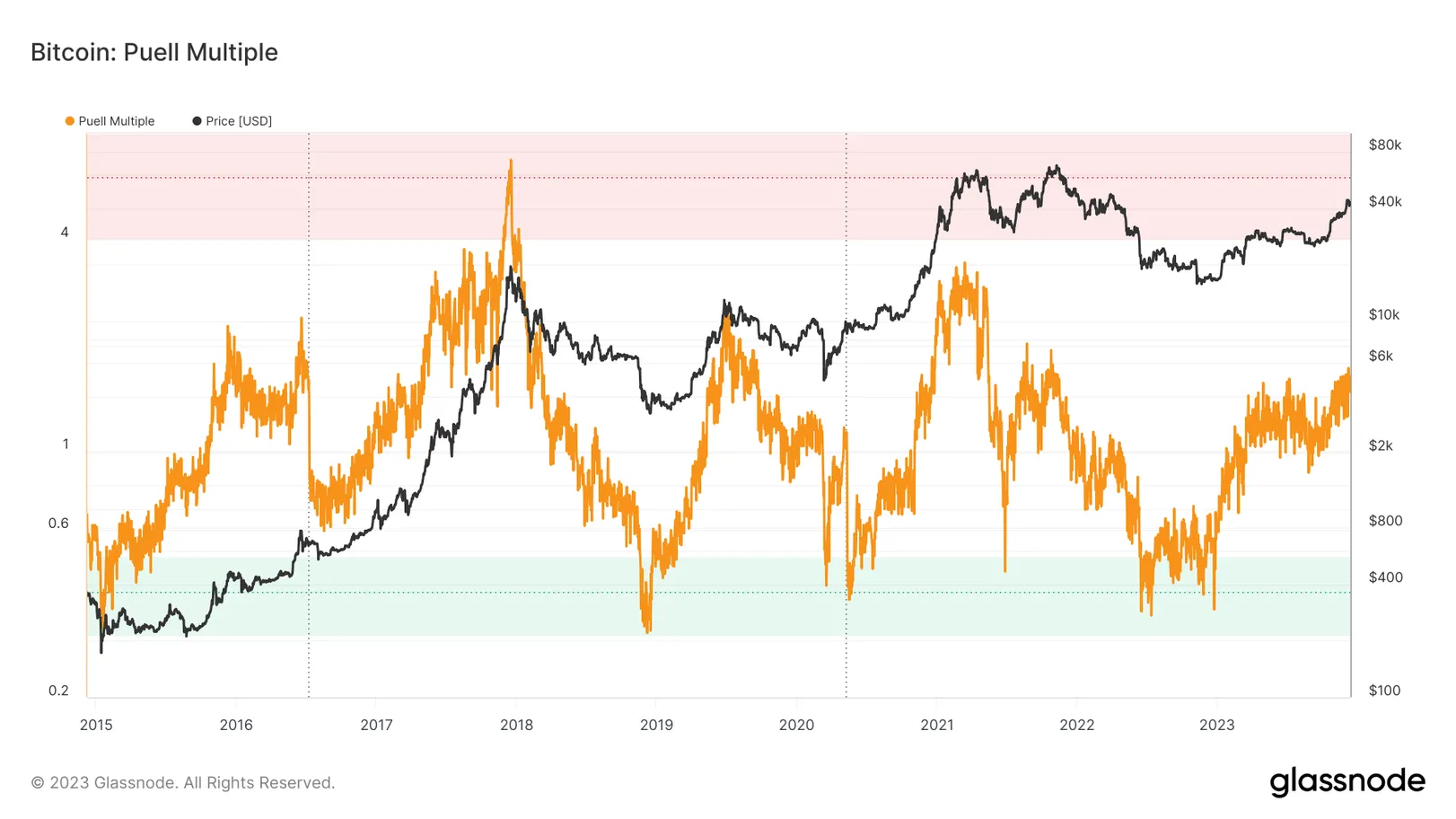Bitcoin‘s (BTC) remarkable 150% rise this year has raised concerns among some investors who show a tendency to rely too much on the first piece of information they learn, revealing the anchoring bias. This bias, which is based on relying too much on the latest or first data, has led to expectations of a price drop among investors who succumbed to the anchoring bias, especially due to the sharp bear market in 2022.
Bitcoin is Not Yet at an Extreme Point According to 3 Important On-Chain Indicators
Traditional finance investors who want to invest in Bitcoin tend to be sensitive to the anchoring bias, expecting lower prices due to the rare doubling of traditional assets within a year. In addition, investors tend to exhibit a behavior known as loss aversion, leading them to exit winning trades early and hold losing trades for longer.
Contrary to these cognitive biases, the three fundamental on-chain indicators of Bitcoin, Puell Multiple, MVRV Z-Score, and Mayer Multiple indicate that the price of the largest cryptocurrency is not excessively high and may continue its rally in 2024.
The Puell Multiple indicator, calculated by dividing the daily BTC issuance value by the 365-day moving average, is currently at a level of 1.53. Being well below the red zone above the 4 level, the indicator points to further upside. Experts evaluate that the indicator could enter a consolidation zone after Bitcoin’s expected block reward halving in April 2024.
Another important on-chain indicator, the MVRV Z-Score, which shows how many standard deviations the market value of Bitcoin is different from its fair value, is at a level of 1.6, indicating that the largest cryptocurrency is overbought. Historically, an MVRV Z-Score above 8 indicates an extremely high price, while negative values indicate discounted prices.

The Mayer Multiple indicator, which measures the difference between Bitcoin’s market price and the 200-day Simple Moving Average (SMA), is at a level of 1.404, indicating that Bitcoin may rise before being considered overbought. As is known, the 200-day SMA is an important indicator in determining long-term trends.
Rise Signal Given by Indicators and Block Reward Halving
Despite the anchoring bias and loss aversion tendencies, the Puell Multiple, MVRV Z-Score, and Mayer Multiple on-chain indicators, which are based on blockchain activities, miner flows, and moving averages, contradict the belief that Bitcoin’s price is excessively high.
The possibility of Puell Multiple entering a consolidation zone after the block reward halving and the fact that Z-Score indicates that the price has not yet risen excessively, as well as Mayer Multiple’s indication that there is room for further increase before Bitcoin reaches overbought levels according to the 200-day SMA in technical analysis, point to a positive outlook.
Currently, the data show that there is more upside potential on the table, challenging cognitive biases that could lead some investors to perceive that the price of Bitcoin has risen excessively. The upcoming block reward halving in April 2024 is now emerging as a significant factor to consider when evaluating Bitcoin’s future performance.

 Türkçe
Türkçe Español
Español









